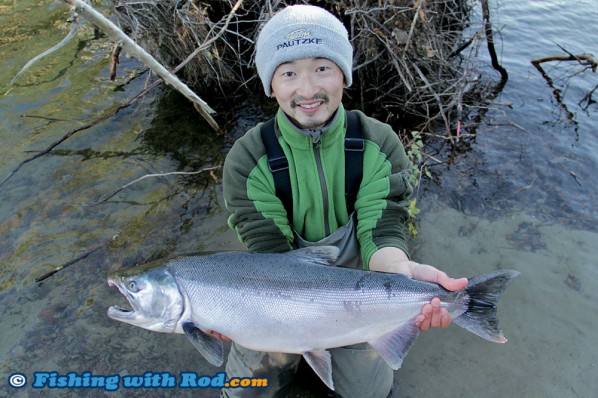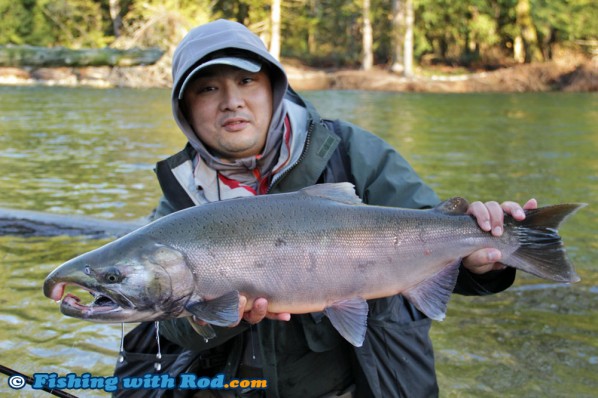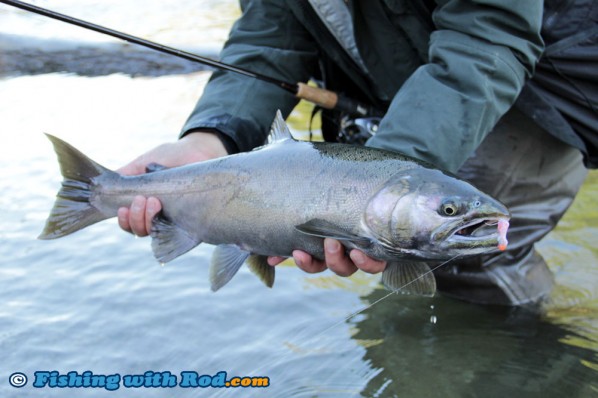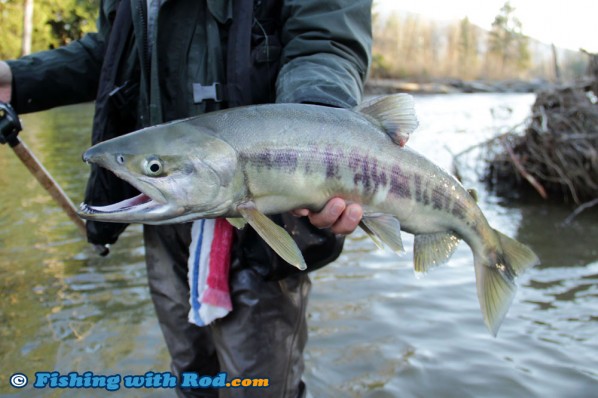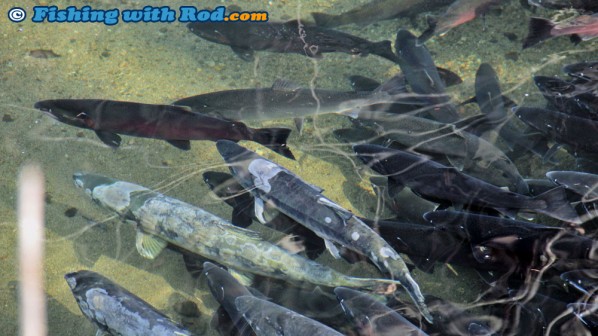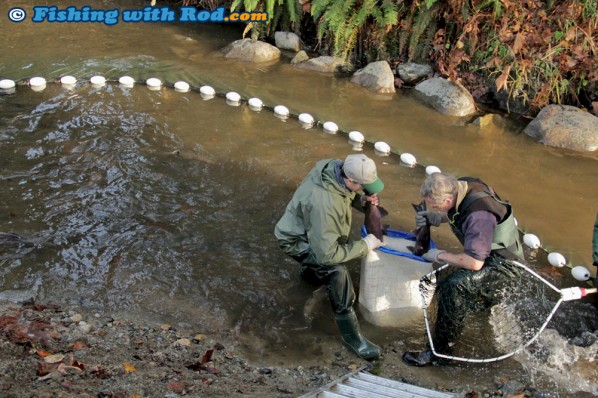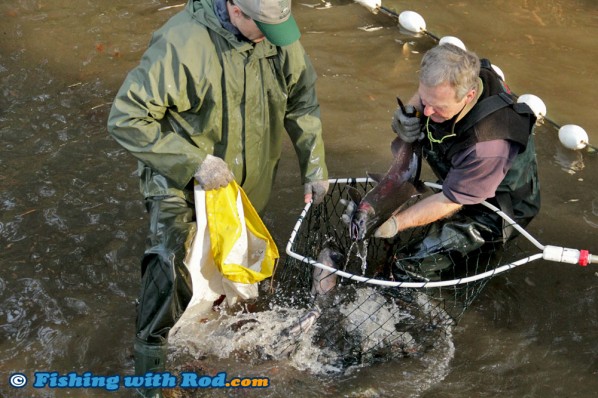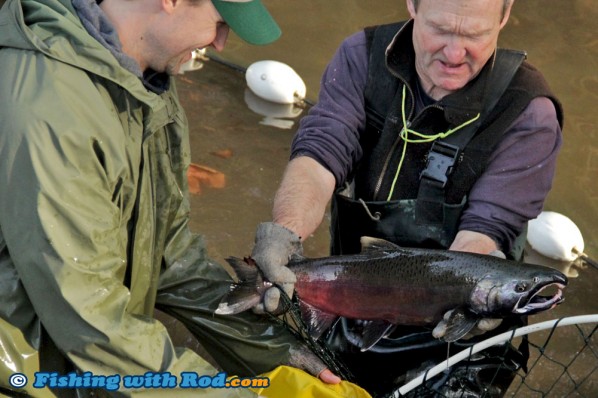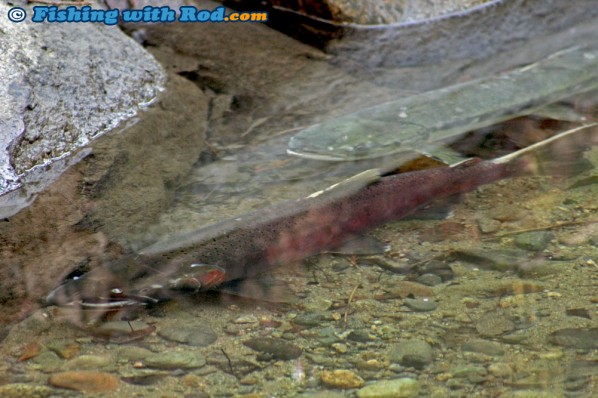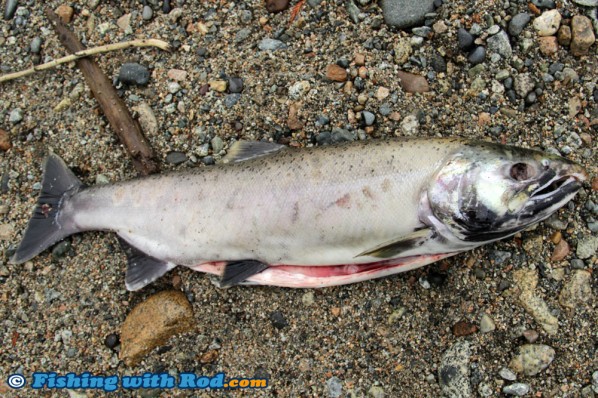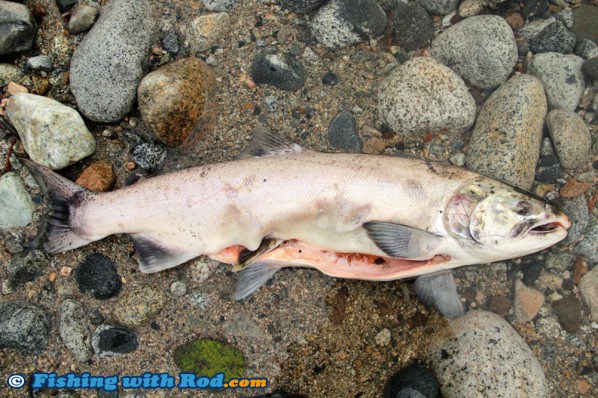November 2013 Photo-essay
Published on Sunday, November 24th, 2013
November can be a rather somber month for Coastal British Columbian anglers. The air temperature dips below zero for the first time after a long summer, while most of us are still on a high driven by the return of fall salmon. River fishing for salmon usually starts tapering off by early November, but those who enjoy exploring in the frosty mornings can be rewarded with some fabulous fishing.
Last week I decided to give salmon fishing another go before packing away the rods for awhile. The short trip was well worth it as my friend Shane and I were both rewarded with coho and chum salmon. I managed to catch an exceptionally big coho salmon, the biggest one of the season in fact.
This fish had me thinking it was a chum salmon for a couple of minutes while it fought stubbornly by staying deeply in the run. I casually played it, but became rather cautious as soon as I realized what was at the end of the line. This hatchery-marked buck, estimated to be around 12lb, was quite fresh compared to the other fish we encountered that day.
While my friend Shane was not lucky enough to encounter a similar specimen, he managed to connect with an even larger fish. It was a wild coho salmon, as the presence of its adipose fin suggested, so we gently released him back to spawn.
Other coho salmon we found at the end of the line were not as silver, which was not really a surprise considering we are now approaching December.
Among the many chum salmon which we brought in, I noticed a few were exceptionally small. This fish, approximately 3 or 4lb, was much smaller than most chum salmon we usually see. I enquired about this small buck and my colleagues all concluded that it is most likely a 3 year old fish, rather than a typical 4 year old fish. The fish simply returned one year earlier, therefore it has missed out one extra year of feeding, resulting in a smaller size.
In the past two weeks I have wandered around our urban streams in the Lower Mainland. Because we are seeing an exceptionally good return of coho salmon this year, it is not surprising to see these small streams filled with red spawners. My recent visit to Hyde Creek produced these photographs. Both spawning coho and chum salmon can be found along the entire creek. At some spots, hundreds of fish can be seen circling around. These sightings tell us, when given the chance, our salmon populations can thrive, even in the harshest environment such as Metro Vancouver.
While visiting the creek, I stopped by the hatchery to see volunteers from Hyde Creek Watershed Society in action. It is a rather busy time of the year for them, because spawners need to be collected, eggs need to be fertilized, and carcasses need to be counted.
If you have packed away your fishing rods for the season, consider becoming a volunteer at one of many community watershed stewardship groups and hatcheries where help is always wanted. It is a entertaining way to give back to the fishery resource and gain a better understanding on the biology of Pacific salmon.

